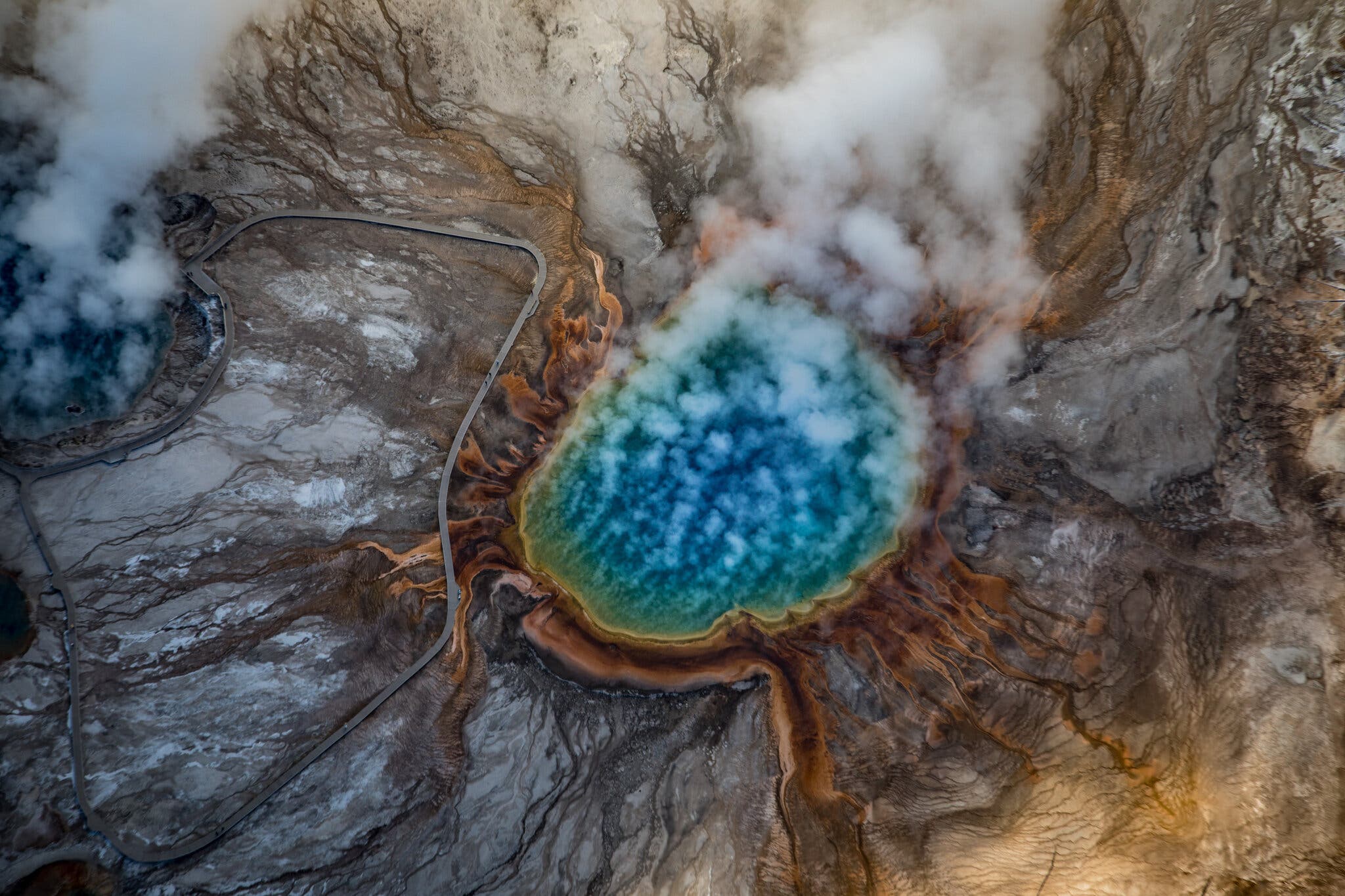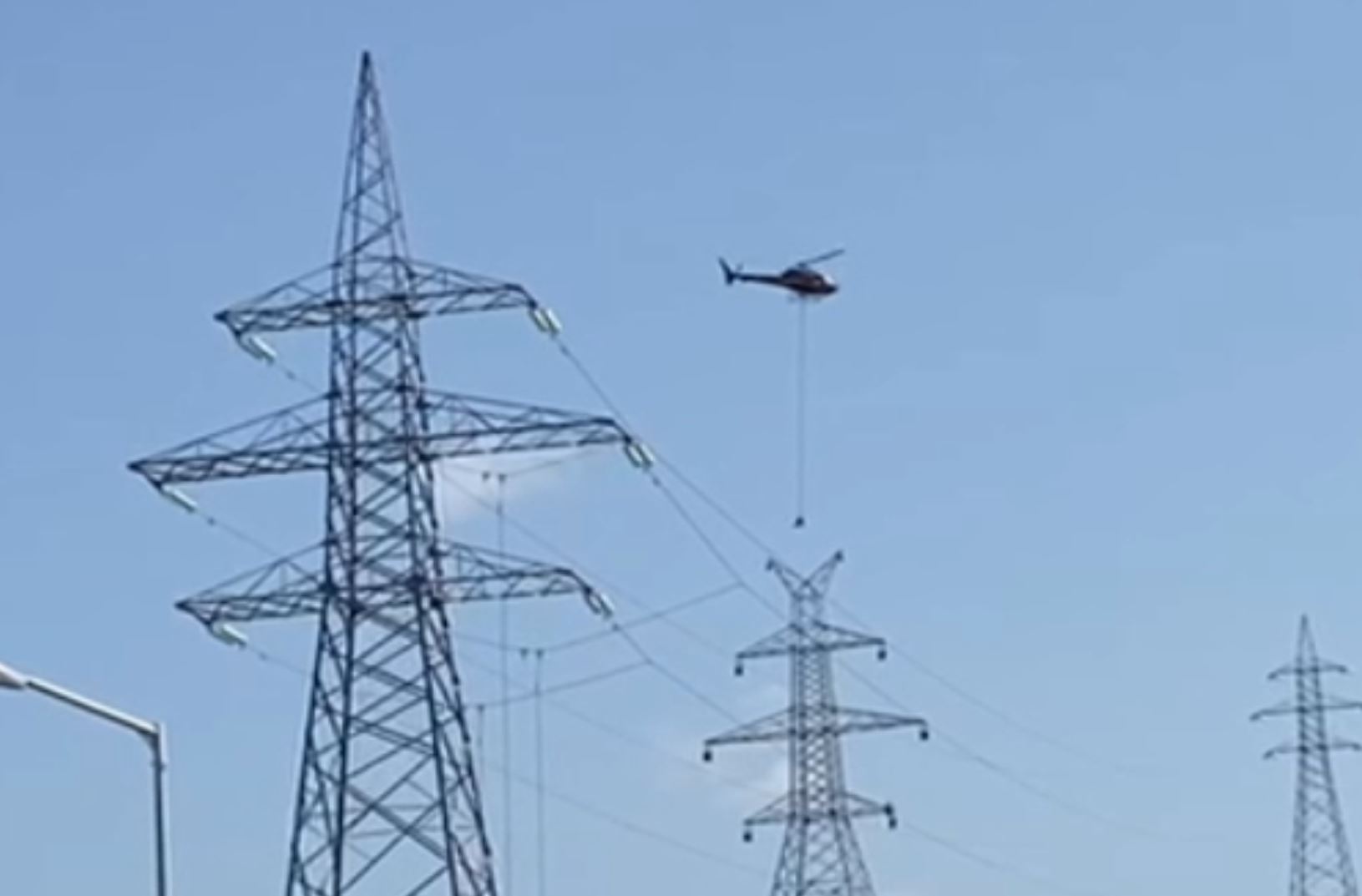Exploring The Yellowstone Magma Reservoir: A Look At Future Volcanic Hazards

Table of Contents
The Size and Composition of the Yellowstone Magma Reservoir
Understanding the Magma Chamber
The Yellowstone magma reservoir is not a single, monolithic chamber, but rather a complex system of interconnected magma bodies residing several kilometers beneath the Earth's surface. Current scientific understanding suggests a vast, partially molten reservoir extending across a substantial area beneath Yellowstone National Park. Its exact dimensions remain a subject of ongoing research, but estimates point to a volume of hundreds of cubic kilometers. This immense body of magma is not uniform; it comprises various pockets of molten rock with differing compositions and temperatures.
- Dimensions: Estimates of the reservoir's dimensions vary, but it’s significantly larger than previously thought, extending far beyond the boundaries of the visible volcanic features.
- Interconnectedness: The Yellowstone magma reservoir is likely connected to deeper magma sources through a network of fractures and conduits, allowing for magma movement and replenishment.
- Chemical Composition: The magma within the reservoir is largely rhyolitic, characterized by a high silica content. This high silica content contributes to its high viscosity, potentially leading to more explosive eruptions. The presence of dissolved gases, such as water vapor and carbon dioxide, further increases the potential for explosive activity.
Seismic and Geophysical Data
Scientists utilize advanced techniques to probe the depths of the Yellowstone magma reservoir and glean insights into its dynamics. Seismic tomography, a technique that uses seismic waves to create three-dimensional images of the Earth's interior, provides crucial information about the reservoir's structure and magma distribution. GPS measurements monitor ground deformation, detecting subtle shifts in the Earth's surface caused by magma movement and pressure changes. Gravity surveys, measuring variations in Earth's gravitational field, can also help to map the density variations associated with the magma reservoir.
- Seismic Tomography: This technique reveals the location, shape, and extent of molten rock within the reservoir.
- GPS Measurements: Minute changes in ground elevation and horizontal movement provide clues about magma pressure changes and potential for eruption.
- Gravity Surveys: These surveys help scientists delineate the boundaries and volume of the magma reservoir by detecting density differences.
Yellowstone's Eruptive History and Recurrence Intervals
Past Supereruptions
Yellowstone's history is punctuated by cataclysmic supereruptions, events capable of drastically altering the global climate. Three supereruptions have occurred in the past 2.1 million years, each leaving behind vast calderas—large, basin-shaped depressions formed by the collapse of a volcano's magma chamber after a massive eruption.
- Huckleberry Ridge Tuff (2.1 million years ago): This eruption ejected an estimated 2,500 cubic kilometers of material.
- Mesa Falls Tuff (1.3 million years ago): This eruption released approximately 280 cubic kilometers of material.
- Lava Creek Tuff (640,000 years ago): This eruption ejected around 1,000 cubic kilometers of material, shaping the Yellowstone caldera we see today.
Predicting Future Eruptions
Predicting volcanic eruptions, especially supereruptions, is a complex challenge. While scientists cannot pinpoint the exact time of a future eruption, they utilize a variety of methods to assess the probability and potential characteristics of such an event.
- Statistical Models: These models use past eruption data to estimate the recurrence intervals of eruptions.
- Geological Data: Detailed study of past eruptions and the geological record provides insights into the system's behavior.
- Real-Time Monitoring: Continuous monitoring of seismic activity, ground deformation, and gas emissions provides crucial real-time data.
Monitoring the Yellowstone Magma Reservoir
The Yellowstone Volcano Observatory (YVO)
The Yellowstone Volcano Observatory (YVO) plays a critical role in monitoring the Yellowstone volcanic system. This interagency collaboration involves scientists from various institutions, including the U.S. Geological Survey (USGS), the University of Utah, and others.
- Seismic Monitoring: A dense network of seismic stations continuously records earthquake activity, providing insights into magma movement and pressure changes.
- Ground Deformation Measurements: GPS and other geodetic techniques precisely measure changes in the Earth's surface, detecting subtle uplift or subsidence related to magma movement.
- Gas Emissions: Monitoring gas emissions, such as carbon dioxide and sulfur dioxide, helps to track changes in the volcanic system's activity.
- Thermal Monitoring: Infrared sensors and satellite imagery monitor heat flow, providing insights into subsurface magma activity.
Interpreting Monitoring Data
Scientists carefully analyze data from various monitoring techniques to assess the current state of the Yellowstone volcanic system and identify potential precursors to an eruption.
- Increased Seismic Activity: A significant increase in the frequency and magnitude of earthquakes might indicate magma movement.
- Ground Deformation: Rapid uplift or subsidence of the ground surface suggests changes in magma pressure.
- Elevated Gas Emissions: Increased release of volcanic gases can signify rising magma.
Potential Volcanic Hazards and Mitigation Strategies
Types of Volcanic Hazards
A future eruption at Yellowstone could pose several significant hazards, affecting a wide geographical area.
- Pyroclastic Flows: Rapidly moving currents of hot gas and volcanic debris could devastate nearby areas.
- Ashfall: Widespread ashfall could disrupt air travel, damage infrastructure, and contaminate water supplies over vast distances.
- Lahars: Mudflows resulting from the interaction of volcanic debris with water could inundate valleys and river systems.
- Volcanic Gases: Release of toxic volcanic gases could pose health risks to people and animals.
Mitigation and Preparedness
Mitigating the risks associated with a Yellowstone eruption requires a multi-faceted approach, emphasizing preparedness and public awareness.
- Hazard Mapping: Detailed hazard maps identify areas at risk from different types of volcanic hazards.
- Evacuation Plans: Development and regular testing of evacuation plans are essential for the safety of local communities.
- Public Awareness Campaigns: Educating the public about volcanic hazards and preparedness measures is vital.
- Collaboration: Close collaboration between scientists, government agencies, and local communities is crucial for effective mitigation.
Conclusion
The Yellowstone magma reservoir represents a powerful and dynamic geological system with the potential for future volcanic activity. Ongoing monitoring by the Yellowstone Volcano Observatory is crucial for tracking its behavior and assessing potential hazards. While predicting the precise timing of a future eruption remains challenging, understanding the characteristics of the Yellowstone magma reservoir, its eruptive history, and potential hazards is essential for developing effective mitigation strategies and ensuring public safety. Understanding the Yellowstone magma reservoir is crucial for mitigating future risks. Stay informed about the latest research and monitoring updates from the Yellowstone Volcano Observatory to ensure preparedness and minimize the potential impact of future volcanic activity.

Featured Posts
-
 Msabqt Twzyf Bryd Aljzayr 1446 Dlyl Shaml Lltsjyl
May 27, 2025
Msabqt Twzyf Bryd Aljzayr 1446 Dlyl Shaml Lltsjyl
May 27, 2025 -
 Alien Earth Sxsw 2025 Premiere Uncovering Hidden Easter Eggs
May 27, 2025
Alien Earth Sxsw 2025 Premiere Uncovering Hidden Easter Eggs
May 27, 2025 -
 Epidromi Se Ilektrika Aytokinita Klopi Kalodion Se Vinteo
May 27, 2025
Epidromi Se Ilektrika Aytokinita Klopi Kalodion Se Vinteo
May 27, 2025 -
 Free And Legal Ways To Watch 1923 Season 2 Episode 5 Tonight
May 27, 2025
Free And Legal Ways To Watch 1923 Season 2 Episode 5 Tonight
May 27, 2025 -
 Where To Stream Ghost Season 4 Finale Legally And Free
May 27, 2025
Where To Stream Ghost Season 4 Finale Legally And Free
May 27, 2025
Latest Posts
-
 John Haliburtons Pacers Return 8 Game Absence Ends
May 28, 2025
John Haliburtons Pacers Return 8 Game Absence Ends
May 28, 2025 -
 Jalen Brunson Addresses The Tyrese Haliburton Prediction Knicks Update
May 28, 2025
Jalen Brunson Addresses The Tyrese Haliburton Prediction Knicks Update
May 28, 2025 -
 Tyrese Haliburtons Father Pacers Remove Suspension
May 28, 2025
Tyrese Haliburtons Father Pacers Remove Suspension
May 28, 2025 -
 Bon Plan Samsung Galaxy S25 256 Go 5 Etoiles A 699 90 E
May 28, 2025
Bon Plan Samsung Galaxy S25 256 Go 5 Etoiles A 699 90 E
May 28, 2025 -
 Nba News Jalen Brunson And The Tyrese Haliburton Wwe Script
May 28, 2025
Nba News Jalen Brunson And The Tyrese Haliburton Wwe Script
May 28, 2025
